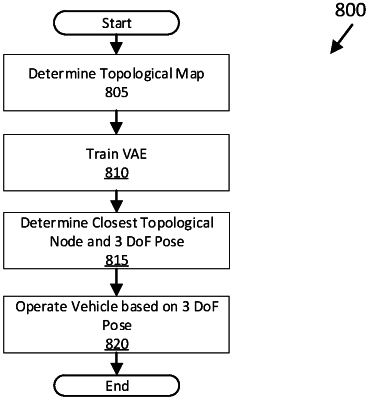| CPC G06V 20/56 (2022.01) [G06F 18/24 (2023.01); G06N 3/045 (2023.01); G06N 3/08 (2013.01); G06V 10/25 (2022.01); G06V 10/751 (2022.01); G06V 10/82 (2022.01); H04W 4/46 (2018.02); G06N 3/047 (2023.01); G06N 3/088 (2013.01)] | 20 Claims |

|
1. A system, comprising a computer including a processor and a memory, the memory storing instructions executable by the processor to:
receive a plurality of temporally successive vehicle sensor images as input to a variational autoencoder neural network that outputs an averaged semantic birds-eye view image that includes respective pixels determined by averaging semantic class values of corresponding pixels in respective images in the plurality of temporally successive vehicle sensor images;
from a plurality of topological nodes that each specify respective real-world locations, determine a topological node closest to a vehicle, and a three degree-of-freedom pose for the vehicle relative to the topological node closest to the vehicle, based on the averaged semantic birds-eye view image; and
determine a real-world three degree-of-freedom pose for the vehicle by combining the three degree-of-freedom pose for the vehicle relative to the topological node and a real-world location of the topological node closest to the vehicle.
|